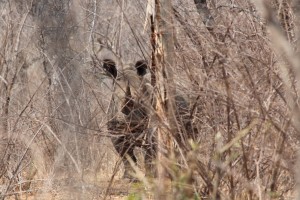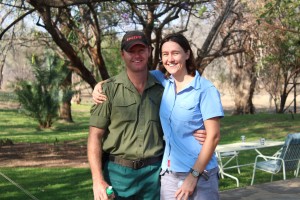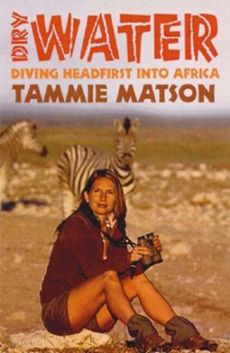A couple of months ago while in the Save Valley Conservancy, Zimbabwe I was fortunate to spend some time with the conservancy’s new anti-poaching team, led by husband and wife team, Bryce and Lara Clemence, who started on the job in April. I have to admit, I was curious to know about how they planned to get on top of the rhino poaching in this part of the world.
Twelve rhinos were poached in the Save Valley Conservancy in the first three months of this year. Then soon after I was there in June, a white rhino female was poached, and in a further tragedy, lions killed her calf. The story of Maduma, the de-horned white rhino bull who had been shot multiple times before what was left of his horns were hacked off, later found staggering around the bush concussed but somehow still alive, was still fresh in my mind from the year before. Maduma lived for a couple of weeks, but due to the severity of his wounds he eventually had to be euthanised.
With rhino horn being worth twice the price of gold in Asia, and African game scouts risking their lives against hardened, well armed criminal syndicates on a daily basis, it’s a huge challenge to get on top of this problem. Talking to the anti-poaching teams on the ground in the conservancy really brought home what they’re up against. This is a battle that can’t be fought in Africa alone, but needs attacking all along the trade chain to Vietnam where the horns end up.
In September, when I walked up to a wild black rhino with Bryce’s game scouts in the conservancy, I was reminded of just how vulnerable this species is. With such poor vision, it had been too easy to sneak up to this young bull to about 30m away. He let us follow him in the fading daylight as he fed on sickle bush and acacias, seemingly oblivious (this is him in the video below). If we had been poachers, he’d have been a goner.
It made me wonder if experiences like this would soon become a thing of the past. There are less than 5000 black rhinos left in Africa and the faster they disappear, the more their horns are worth. Although studies have shown that dehorned rhinos are less likely to be poached (more on this here if you’re interested) it certainly doesn’t guarantee their protection as the stub still has value on the black market.
So I couldn’t have been more delighted to hear from Lara and Bryce this week that their team was successful in apprehending not only one of the most notorious rhino poachers, a Zambian national who ran a high level poaching syndicate, but also two other poachers who were involved. This is a huge win for the rhinos and for the people on the ground fighting for them.
The group of five men in total had shot and wounded a dehorned bull, which now thankfully seems to be okay. The information that Bryce’s team will get from the poachers is invaluable and will help apprehend others.
One thing that is encouraging is that the Clemences’ anti-poaching operation appears to be making a difference in the Save Valley Conservancy, both in reducing the amount of rhinos poached and in terms of apprehending poachers. That is very good news.
The funds that were raised with your help earlier this year at the Imagine Africa dinners in Sydney were used directly to support their work and that of the conservancy, which I think made it all worthwhile.
To all those on the ground fighting to keep Zimbabwe’s last rhinos alive, I salute you, and keep up the good work Save Valley Conservancy – we’re right behind you.
You can support the Save Valley Conservancy’s fight against poaching by donating directly to them here or by donating to the SAVE Foundation in Western Australia here.








